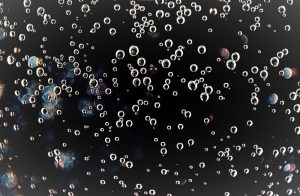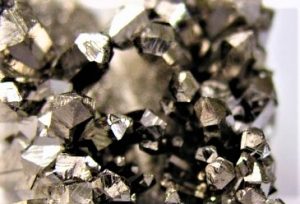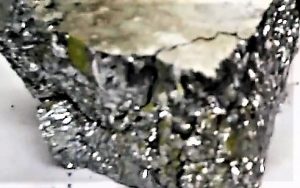Nucleation
Nucleation is a key process for understanding the thermal process of polymers, alloys and some types of ceramics. In the branches of chemistry and biology, it can refer to multimers formation, which are defined as those involved as intermediaries in polymerization processes. This is the best model that exists for crystallization and amyloidogenesis processes. In the branch of molecular biology, this process is used to end the critical phase in polymeric assembly structures such as microfilaments. The nucleation process also presents two contributions that determine the stability of the formed nuclei: the free energy of solidification, and the free energy of new surfaces creation of the nucleus, which is unfavorable. A clear example is, for example, when pure water freezes at 0°C, but can "cool down" to -42°C1 without freezing, if there are no core builders for ice formation. Therefore, cores are important in meteorology, because there are often few of them present within the upper atmosphere.
What is nucleation?
Nucleation is the appearance of a new stable phase. It is an important and necessary process to understand the polymer thermal process. It can also be defined as the formation of multimers, being the nucleation the best way to intermediate in polymerization processes, helping to stabilize the nuclei.
Nucleation characteristics
Nucleation is a process that usually occurs with more difficulty inside a uniform substance. It is characterized because the thermal activation that it possesses will provide the necessary energy to be able to give form to a stable nucleus. It has two different types, homogeneous and heterogeneous. This process can be called as a new phase development.
Nucleation mechanics
It can occur with difficulty within a substance that has uniformity characteristics, and this is achieved through a process called homogeneous nucleation. Liquids that cool below the maximum temperature of heterogeneous nucleation, but which are above the temperature of homogeneous nucleation are said to be super cooled. In heterogeneous type, the release of a certain amount of energy by destroying a part of the previous interface.
At the end of the process, thermal activation will give us enough energy to create a stable core. Then, these can grow until thermodynamic equilibrium is restored.
The transformation of liquids to solids occurs in two stages. The first of them is the nucleation of the solid phase in the middle of the liquid phase, where the generation of a solid-liquid surface is produced that has a surface energy (energy per surface unit) and, the second of them during the solidification coexist both phases, solid and liquid.
Types
Metals solidification process is based on three different and important stages; formation of stable nuclei in the melt, the growth of the nucleus until giving origin to crystals and the formation of a granular structure. The appearance of each of these grains after metal solidification will depend on several factors, one of the most important being thermal gradients. There are two different types with respect to the solidification of metals and they are the following:
- Homogeneous Nucleation: This type occurs in the molten liquid when the metal itself gives the atoms to achieve nucleus formation. When a pure liquid metal cools below its equilibrium solidification temperature in a correct way and in sufficient quantity, homogeneous nuclei are formed by slow atom movement which tend to remain grouped. To achieve it requires a high degree of sub-cooling, which can even be hundreds of degrees Celsius for metals. In order for a stable nucleus to become a crystal, a critical size must be reached. The set of atoms that are intertwined with each other is called an embryo. The group that is the largest critical size is called the nucleus.
- Heterogeneous Nucleation: This is what happens in a liquid on the vessel surface that contains insoluble impurities, or some other structural materials that decrease free energy in order to form a stable nucleus. For this type of nucleation to occur, the solid nucleation agent must be wetted by the liquid metal. It takes place over the nucleation agent because the surface energy needed to form a stable nucleus over the material is lower than if the nucleus were created over its own nucleus.
How to cite this article?
Briceño V., Gabriela. (2019). Nucleation. Recovered on 24 February, 2024, de Euston96: https://www.euston96.com/en/nucleation/










